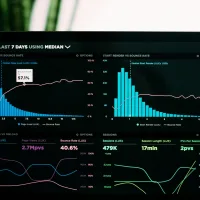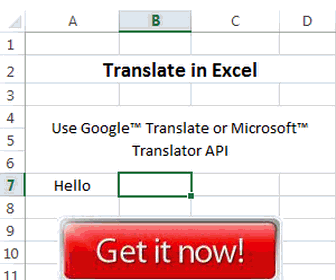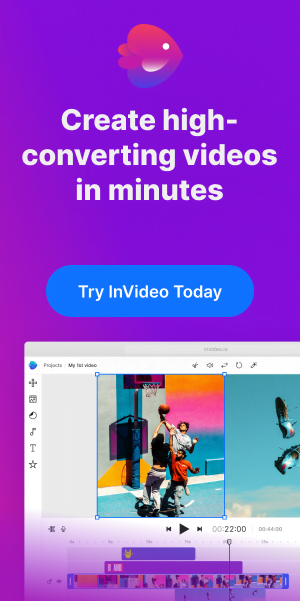What is SEO? Let’s see!
If you own an eCommerce business, a blogging business, or have any kind of online presence, chances are you’ve encountered the acronym “SEO” more times than you can count. It’s the buzzword of the digital age and for a good reason.
But what exactly is this SEO that everyone is talking about, and why should you care?
Billions of people turn to search engines like Google, Bing, and Yahoo for answers, recommendations, and solutions.
And, SEO, which stands for Search Engine Optimization, is your ticket to ensuring your website gets noticed by your target customers.
Let’s say you sell digital products online. The truth is, there are thousands of other websites that also sell digital products, similar to yours.
Unless you have a robust SEO strategy in place, your digital storefront might remain hidden in the shadowy depths of search engine results, and your potential customers might never discover the exceptional offerings you have in store.
Imagine you have a physical storefront on a bustling street. SEO is the equivalent of making sure your store is visible to every passerby, and not hidden behind a row of nondescript buildings.
It’s about strategically placing a neon sign that screams, “Here’s what you’re looking for!” in a crowded market, making sure potential customers can find you with ease.
Now that you get the idea, let’s look at the nitty-gritty of SEO. So, what is SEO?
What is SEO?
Search Engine Optimization, often abbreviated as SEO, is the practice of enhancing a website’s visibility and ranking on search engine results pages (SERPs) through organic (non-paid) methods.
The primary goal of SEO is to increase the quality and quantity of traffic to a website by optimizing its content and structure, making it more appealing to search engines like Google, Bing, and Yahoo.
How Does SEO Work?
SEO, or Search Engine Optimization, is a complex process that involves various strategies and techniques to improve a website’s visibility in search engine results.
At its core, SEO works by optimizing a website’s content, structure, and other factors to make it more appealing to search engines like Google, Bing, and Yahoo.
Here’s a simplified overview of how SEO works:
- Keyword Research: The SEO process begins with keyword research. This involves identifying the specific search terms (keywords) that people use when looking for information related to your website’s content, products, or services. Keyword research helps you understand what your target audience is searching for.
- On-Page Optimization: On-page SEO involves optimizing individual web pages to make them more search engine-friendly. This includes:
- Content Optimization: Creating high-quality, relevant content that incorporates target keywords naturally.
- Meta Tags: Optimizing meta titles and meta descriptions to include target keywords and entice users to click on your search results.
- Headings: Using appropriate headings (H1, H2, etc.) to structure content and make it more readable.
- URL Structure: Creating clean and descriptive URLs that include keywords.
- Image Optimization: Adding alt tags to images and ensuring images are appropriately compressed for faster loading.
- Off-Page Optimization: Off-page SEO focuses on factors outside your website that influence your search engine rankings. Key elements include:
- Backlinks: Acquiring high-quality, authoritative backlinks from other websites. These backlinks signal to search engines that your content is trusted and valuable.
- Social Signals: Building a strong social media presence and encouraging social sharing of your content.
- Brand Mentions: Getting mentioned on other websites, even without a direct link, to establish authority and brand recognition.
- Technical SEO: Technical SEO involves optimizing the technical aspects of your website to ensure search engines can crawl and index it effectively. This includes:
- Site Speed: Improving loading times for better user experience and search ranking.
- Mobile-Friendliness: Ensuring your website is responsive and performs well on mobile devices.
- Structured Data Markup: Adding structured data to provide search engines with additional information about your content.
- XML Sitemaps: Creating XML sitemaps to help search engines understand your website’s structure.
- Robots.txt: Using the robots.txt file to control what parts of your site are crawled by search engines.
- Local SEO: For businesses with a physical presence, local SEO optimizes your website and online profiles to appear in local search results. This includes creating and optimizing your Google My Business listing, acquiring local citations, and managing online reviews.
- Monitoring and Analysis: SEO is an ongoing process. Regular monitoring and analysis of website traffic, keyword rankings, and other SEO metrics are essential to track your progress and make necessary adjustments.
- Content Creation and Updates: Continuously creating and updating high-quality, relevant content keeps your website fresh and engaging for both users and search engines.
- User Experience: Providing an excellent user experience is vital. This includes easy navigation, mobile-friendliness, and fast-loading pages.
- Algorithm Updates: Staying informed about search engine algorithm updates and adjusting your SEO strategies accordingly is crucial, as search engines continually evolve their ranking criteria.
The ultimate goal of SEO is to improve your website’s search engine ranking for relevant keywords, which in turn increases organic (non-paid) traffic. Effective SEO strategies can enhance your website’s visibility, attract more visitors, and ultimately help you achieve your online goals, whether it’s boosting sales, gaining subscribers, or increasing brand awareness.
Types of SEO
There are several types of SEO, each catering to specific aspects and goals of search engine optimization.
Here are the main types of SEO:
- On-Page SEO: This type of SEO focuses on optimizing individual web pages to improve their search engine ranking. It involves optimizing content, meta tags, headings, images, and other on-page elements. On-page SEO also encompasses keyword research and ensuring that relevant keywords are strategically incorporated into the content.
- Off-Page SEO: Off-page SEO concentrates on factors that occur outside of your website to improve its search engine ranking. This includes activities like link building, where you aim to acquire high-quality backlinks from other websites, social media marketing, influencer outreach, and brand mentions. The goal is to establish your website’s authority and credibility in your niche.
- Technical SEO: Technical SEO deals with the technical aspects of a website to improve its visibility to search engines. It involves optimizing website speed, mobile-friendliness, structured data markup, XML sitemaps, and ensuring proper indexing by search engines. Technical SEO is crucial for enhancing user experience and search engine accessibility.
- Local SEO: Local SEO is essential for businesses that serve a specific geographic area. It aims to optimize your website’s visibility in local search results, such as “dentists near me” or “coffee shops in San Francisco.” Local SEO includes setting up and optimizing your Google My Business profile, getting customer reviews, and ensuring accurate NAP (Name, Address, Phone Number) information across online directories.
- eCommerce SEO: If you own different types of eCommerce businesses, then eCommerce SEO is tailored for you. It involves optimizing product pages, category pages, and other aspects of an eCommerce website. Key strategies include optimizing product descriptions, managing duplicate content issues, and creating an efficient site structure that helps users find products easily.
- Voice Search SEO: With the growing popularity of voice-activated devices like smart speakers and virtual assistants, voice search SEO has become important. It focuses on optimizing content for natural language queries and long-tail keywords, which are commonly used in voice searches.
- Video SEO: Video content is increasingly popular. Video SEO involves optimizing video content for platforms like YouTube, making sure video titles, descriptions, and tags are keyword-rich. It also involves creating engaging, high-quality video content that viewers find valuable.
- Mobile SEO: As more people use mobile devices to access the internet, mobile SEO ensures that websites are optimized for mobile users. This includes responsive web design, optimizing page load times, and improving the mobile user experience.
- International SEO: For businesses with a global presence, international SEO ensures that websites rank well in different countries and languages. It involves hreflang tags, country-specific domain extensions, and other strategies to target a global audience effectively.
- App Store Optimization (ASO): App Store Optimization is a specialized form of SEO that focuses on mobile apps. It involves optimizing app titles, descriptions, keywords, and user reviews to improve an app’s visibility and download rate in app stores like the Apple App Store and Google Play Store.
Now That You Know
From the art of keyword research to the science of link building, and the technical intricacies that make your site search engine-friendly, we’ve unveiled the core strategies that drive organic traffic and online success.
But SEO is not a static science – it’s a dynamic, ever-evolving discipline. Search engines continuously update their algorithms, user behaviors change, and new technologies emerge. As such, it’s imperative to stay informed about the latest SEO trends and adapt your strategies accordingly.
Remember, SEO is not just about getting your website noticed; it’s about connecting with the people who matter most to your online presence. It’s about helping users find the information, products, or services they seek.



















